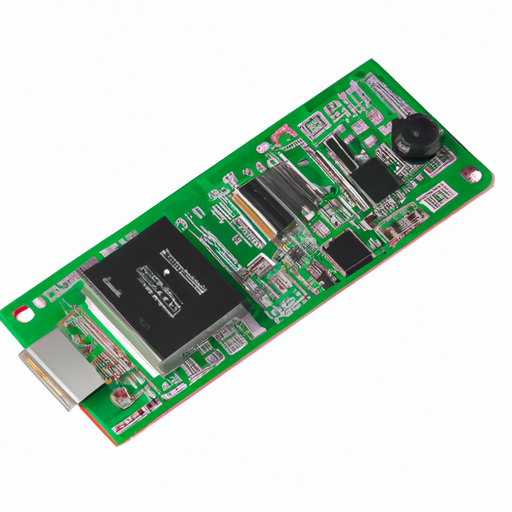Analog-to-digital converter (ADC) is an electronic device used to convert analog signals into digital signals. In modern electronic devices, ADC is a very important component and is widely used in various fields such as communication, medical treatment, industrial control, etc. In order to ensure the performance and quality of ADC, manufacturers usually follow a series of product standards.
ADC product standards usually include the following aspects:
1. Accuracy: The accuracy of an ADC refers to the error between its output digital signal and its input analog signal. Accuracy is usually expressed in bits, such as 12 bits, 16 bits, etc. Manufacturers usually choose the appropriate accuracy level based on application requirements.
2. Sampling rate: The sampling rate of an ADC refers to the number of analog signal samples converted per second. The higher the sampling rate, the more detailed signal changes the ADC can capture. Manufacturers usually choose the appropriate sampling rate based on application requirements.
3. Resolution: The resolution of an ADC refers to the smallest signal change it can distinguish. Resolution is usually expressed in bits, such as 12 bits, 16 bits, etc. Manufacturers usually choose the appropriate resolution based on application requirements.
4. Input range: The input range of an ADC refers to the range of analog signal amplitudes it can accept. The input range is usually expressed in voltage or current, such as 0-5V, 4-20mA, etc. Manufacturers usually select the appropriate input range based on application requirements.
5. Power consumption: The power consumption of an ADC refers to the electrical energy consumed during operation . Manufacturers usually select an appropriate power consumption level based on application requirements to balance the relationship between performance and energy consumption.
6. Temperature range: The temperature range of an ADC refers to the ambient temperature range in which it can work normally. Manufacturers usually select an appropriate temperature range based on application requirements to ensure that the ADC can work properly under various environmental conditions.
7. Interface: ADC usually provides various interfaces, such as SPI, I2C, UART, etc., for communication with other devices. Manufacturers usually choose the appropriate interface type according to application requirements.
In general, the product standards of ADC cover many aspects such as accuracy, sampling rate, resolution, input range, power consumption, temperature range and interface. Manufacturers usually select appropriate standards according to application requirements to ensure that the ADC can meet the needs of users and provide stable and reliable performance. When selecting ADC products, users should consider these standards according to their application requirements and budget, and choose products that meet the requirements.
Analog-to-digital converter (ADC) is an electronic device used to convert analog signals into digital signals. In modern electronic devices, ADC is a very important component and is widely used in various fields such as communication, medical treatment, industrial control, etc. In order to ensure the performance and quality of ADC, manufacturers usually follow a series of product standards.
ADC product standards usually include the following aspects:
1. Accuracy: The accuracy of an ADC refers to the error between its output digital signal and its input analog signal. Accuracy is usually expressed in bits, such as 12 bits, 16 bits, etc. Manufacturers usually choose the appropriate accuracy level based on application requirements.
2. Sampling rate: The sampling rate of an ADC refers to the number of analog signal samples converted per second. The higher the sampling rate, the more detailed signal changes the ADC can capture. Manufacturers usually choose the appropriate sampling rate based on application requirements.
3. Resolution: The resolution of an ADC refers to the smallest signal change it can distinguish. Resolution is usually expressed in bits, such as 12 bits, 16 bits, etc. Manufacturers usually choose the appropriate resolution based on application requirements.
4. Input range: The input range of an ADC refers to the range of analog signal amplitudes it can accept. The input range is usually expressed in voltage or current, such as 0-5V, 4-20mA, etc. Manufacturers usually select the appropriate input range based on application requirements.
5. Power consumption: The power consumption of an ADC refers to the electrical energy consumed during operation . Manufacturers usually select an appropriate power consumption level based on application requirements to balance the relationship between performance and energy consumption.
6. Temperature range: The temperature range of an ADC refers to the ambient temperature range in which it can work normally. Manufacturers usually select an appropriate temperature range based on application requirements to ensure that the ADC can work properly under various environmental conditions.
7. Interface: ADC usually provides various interfaces, such as SPI, I2C, UART, etc., for communication with other devices. Manufacturers usually choose the appropriate interface type according to application requirements.
In general, the product standards of ADC cover many aspects such as accuracy, sampling rate, resolution, input range, power consumption, temperature range and interface. Manufacturers usually select appropriate standards according to application requirements to ensure that the ADC can meet the needs of users and provide stable and reliable performance. When selecting ADC products, users should consider these standards according to their application requirements and budget, and choose products that meet the requirements.









